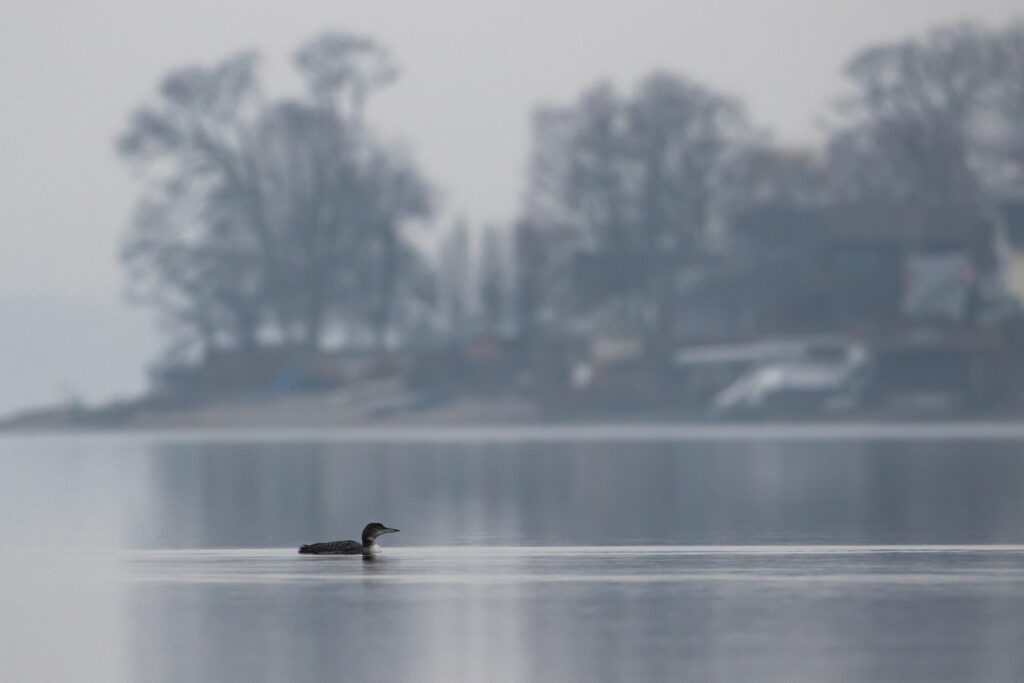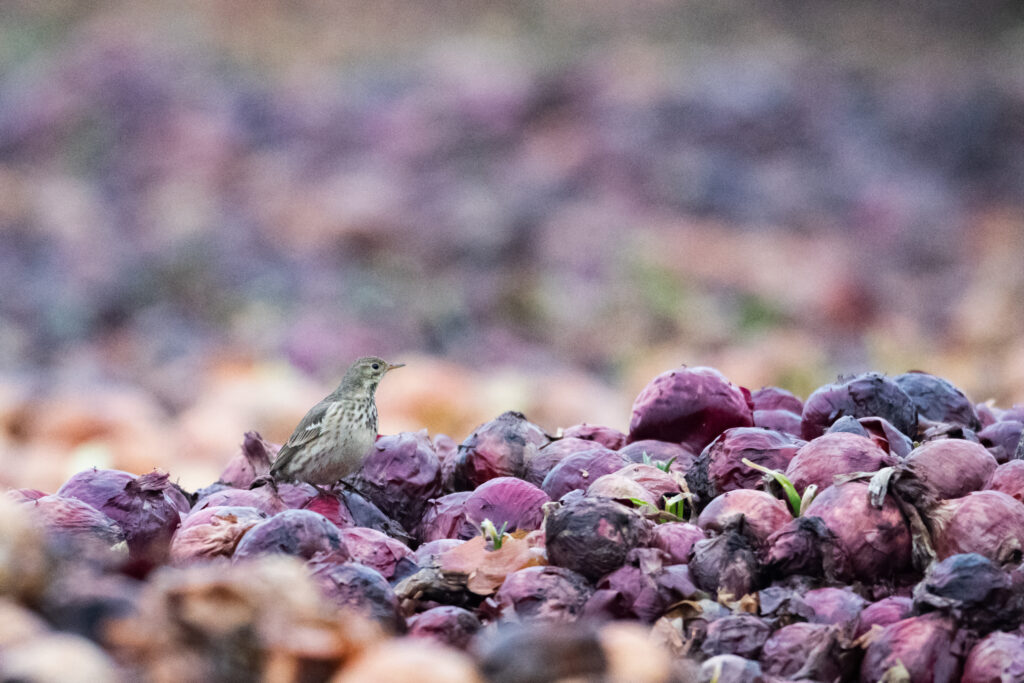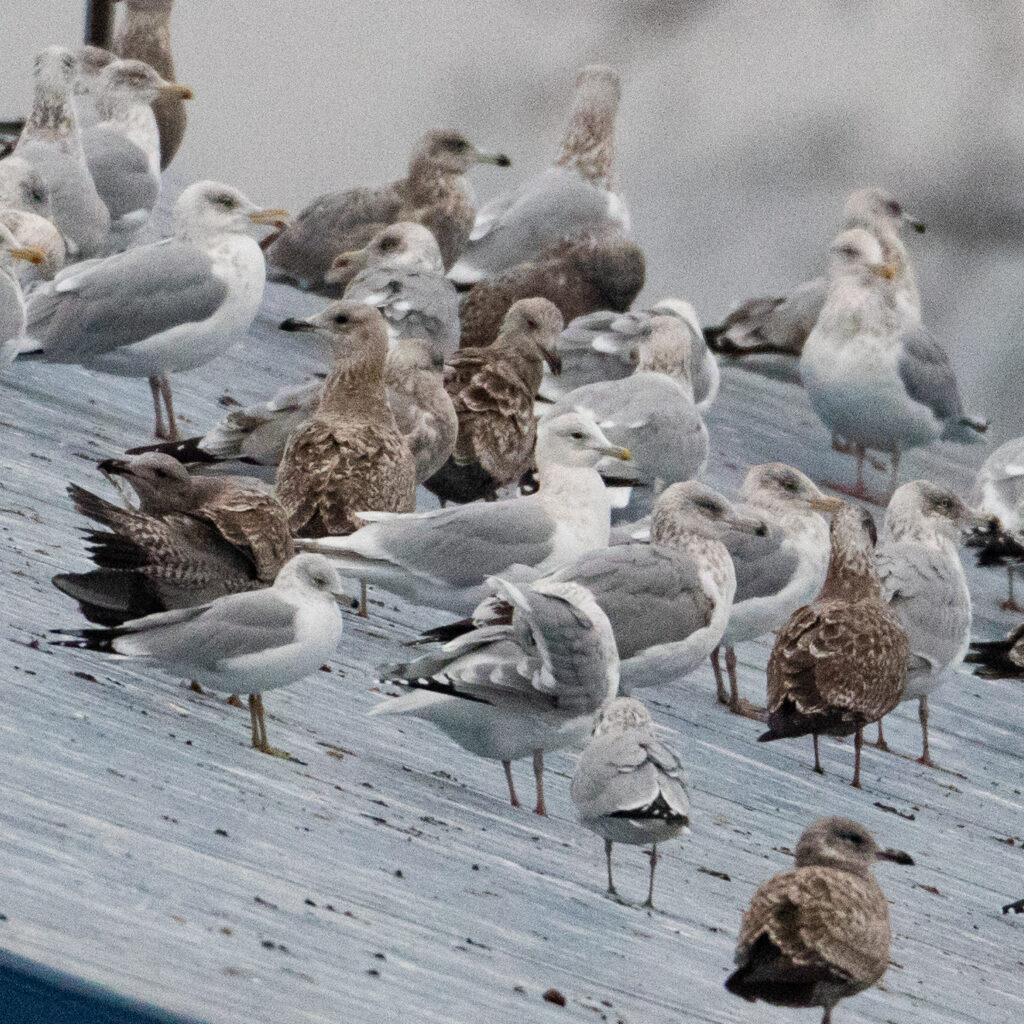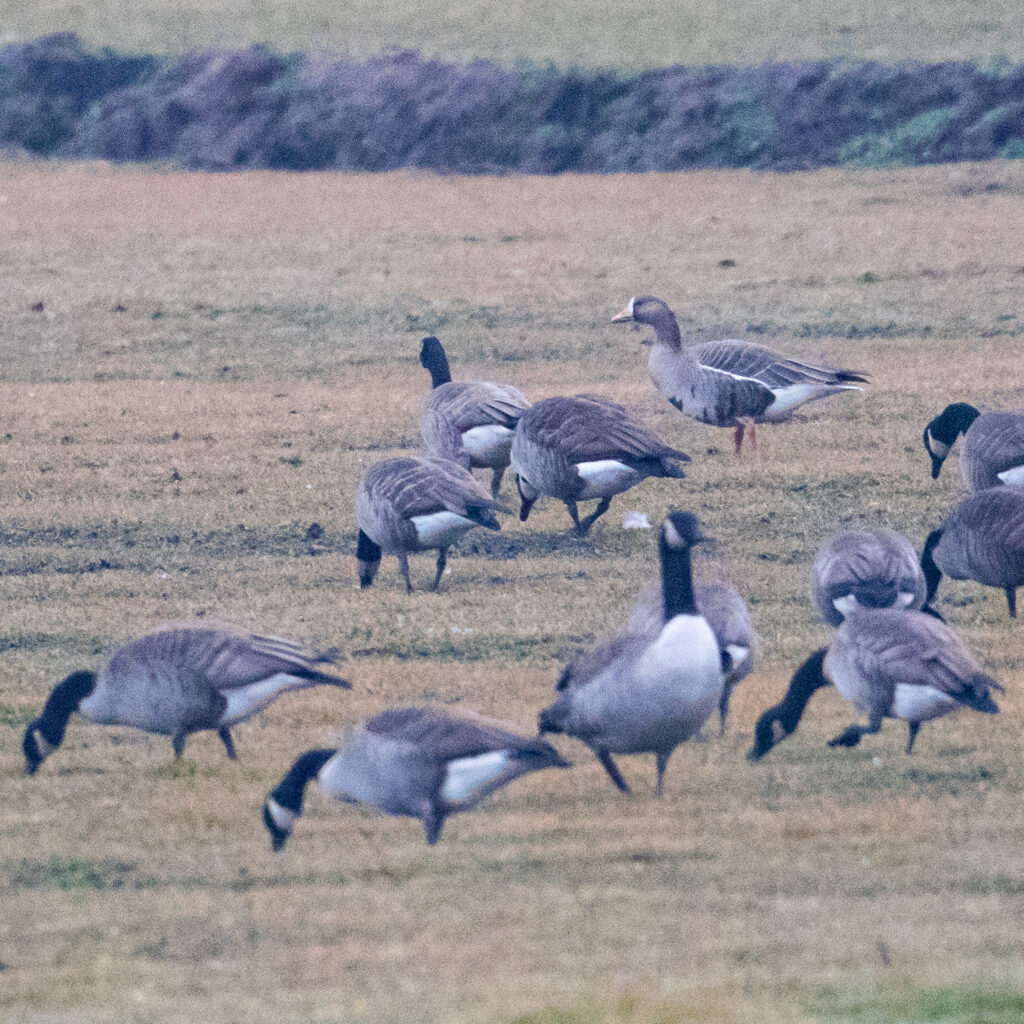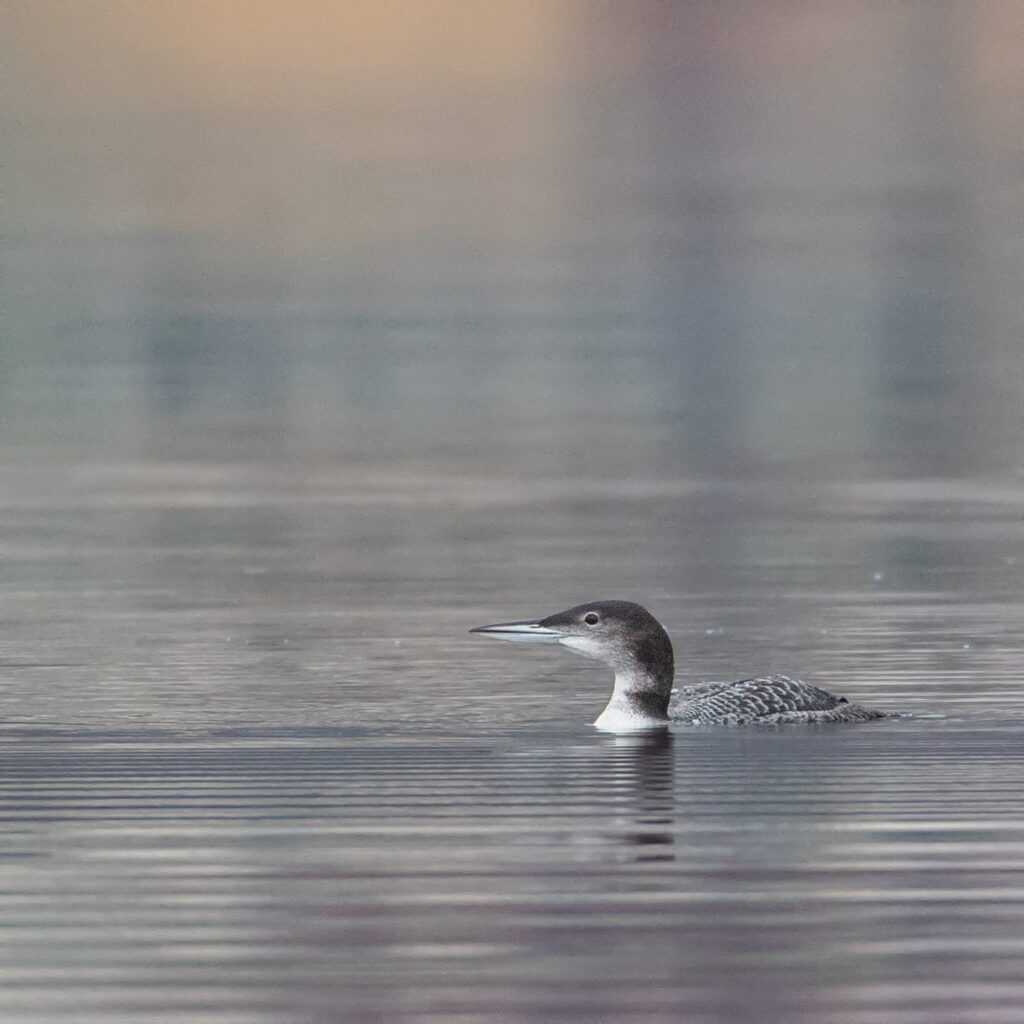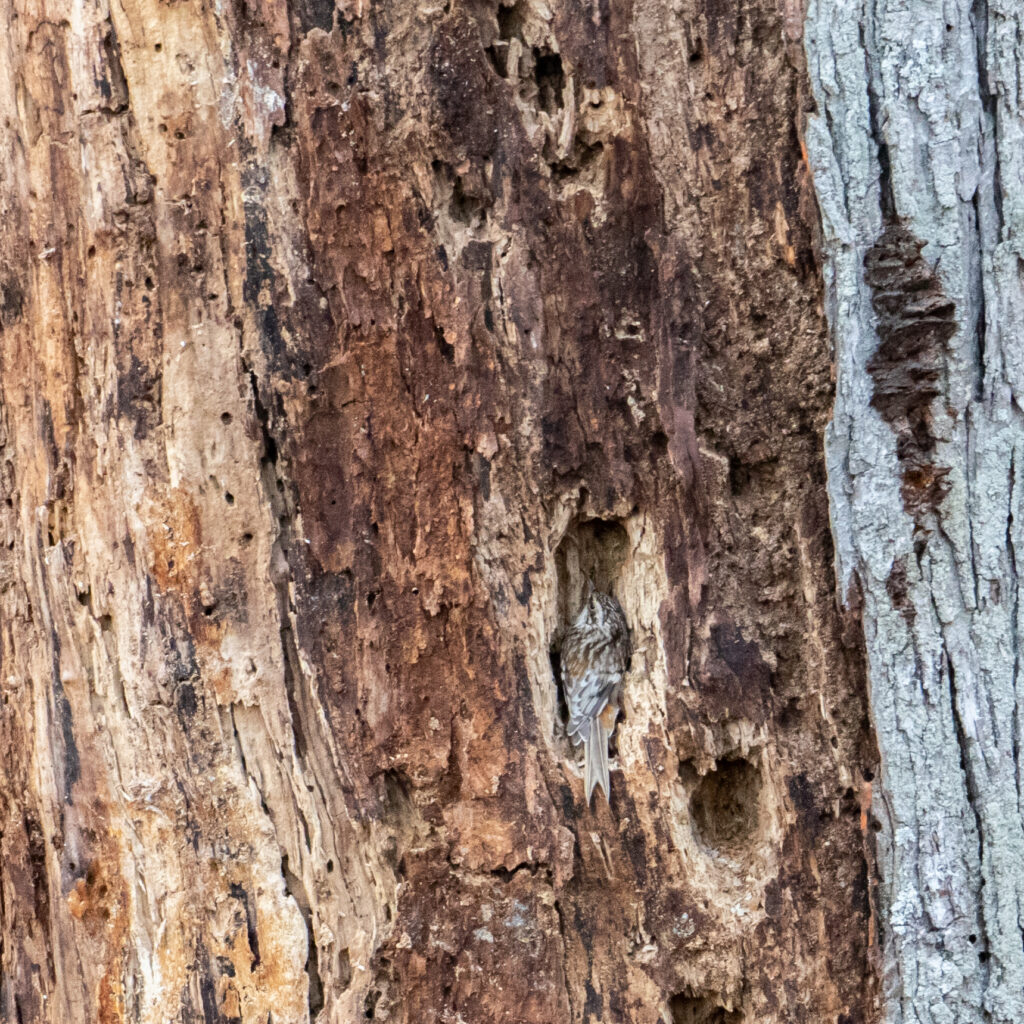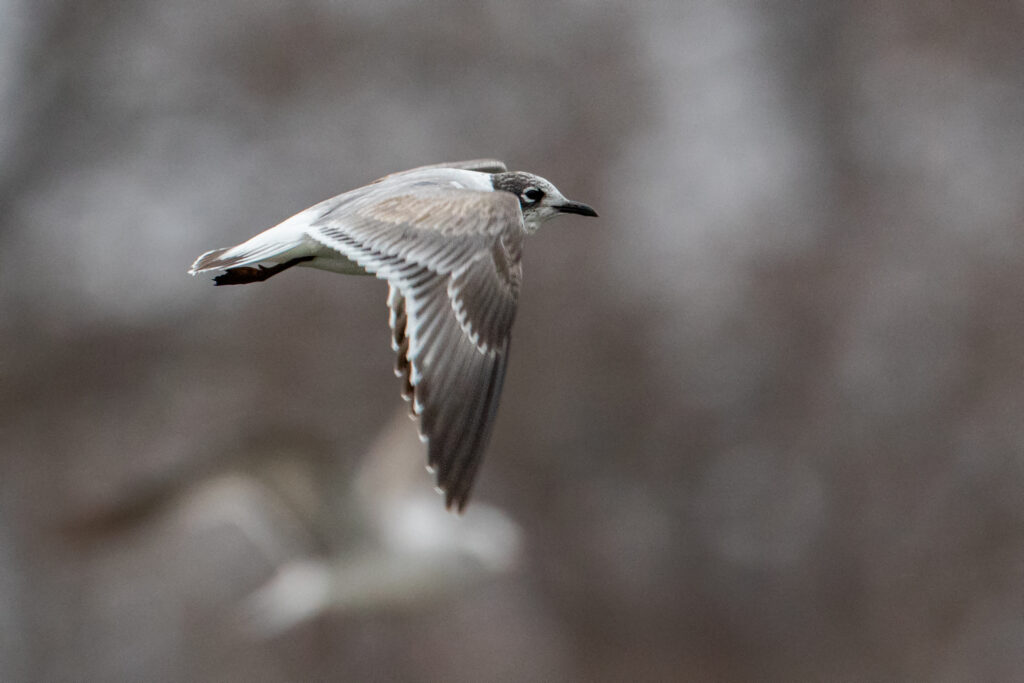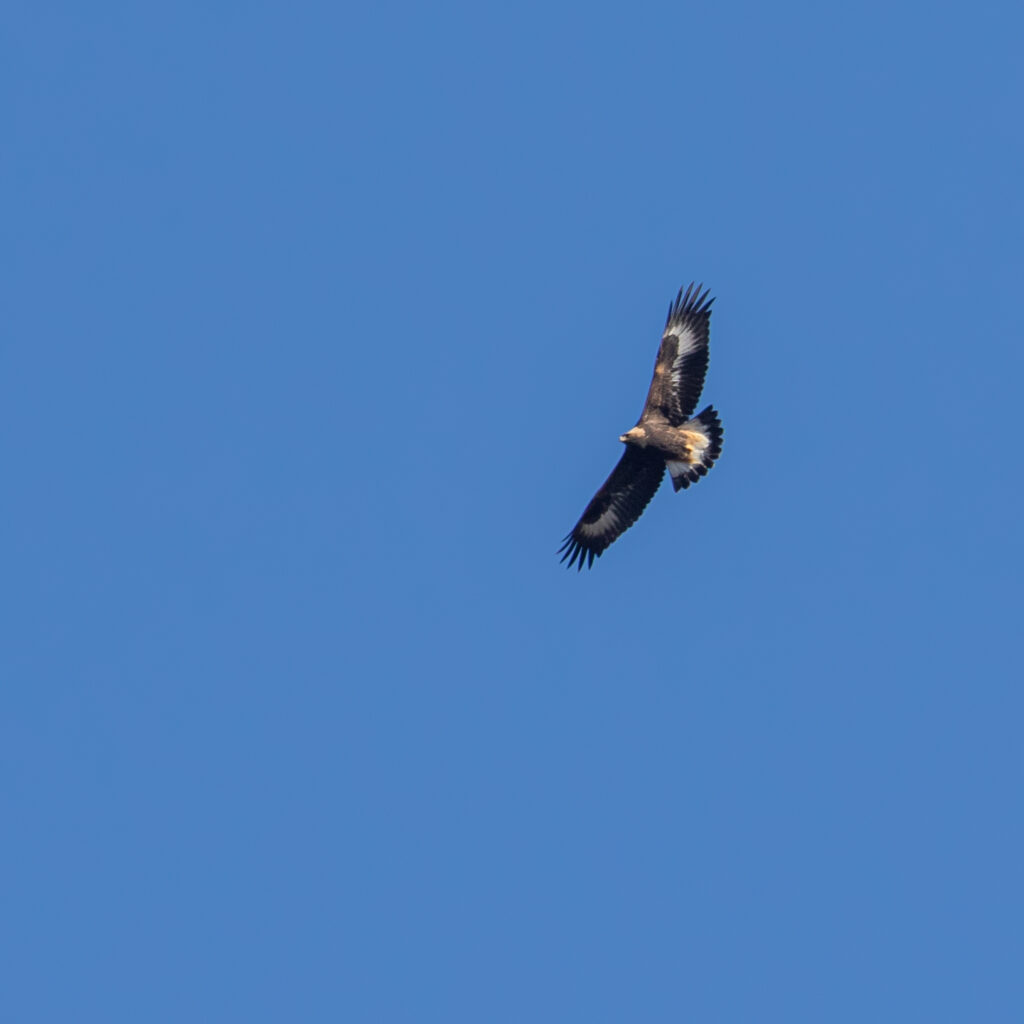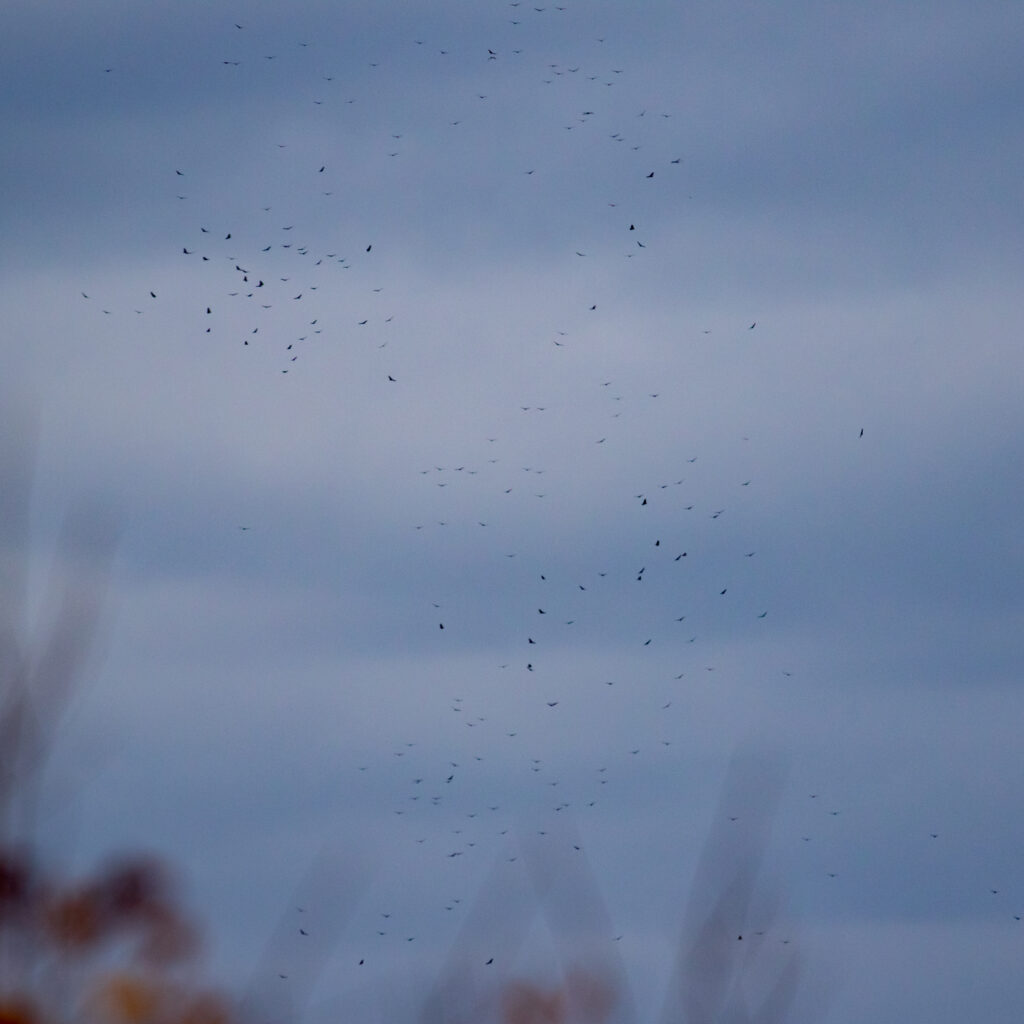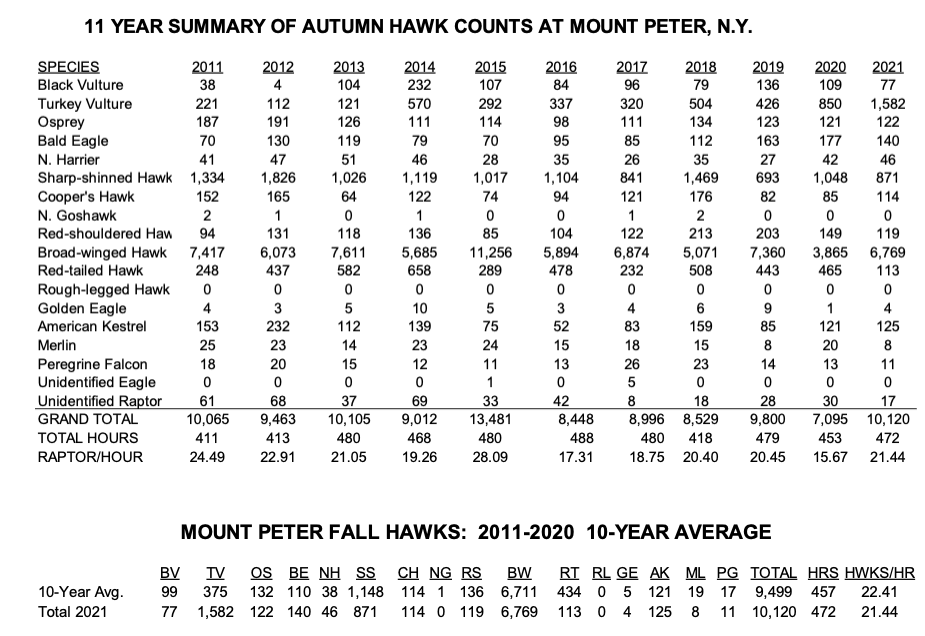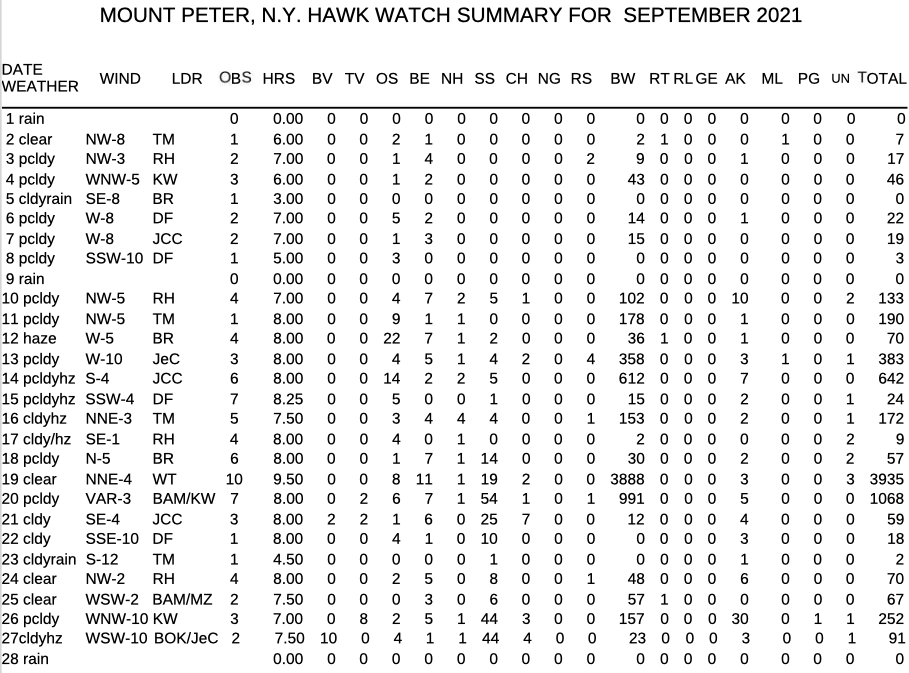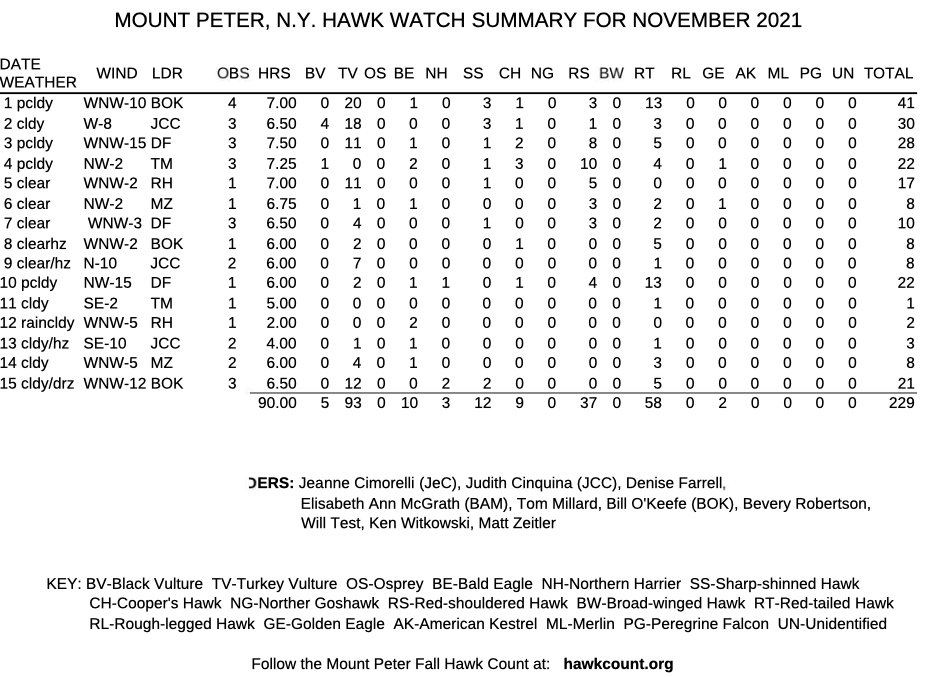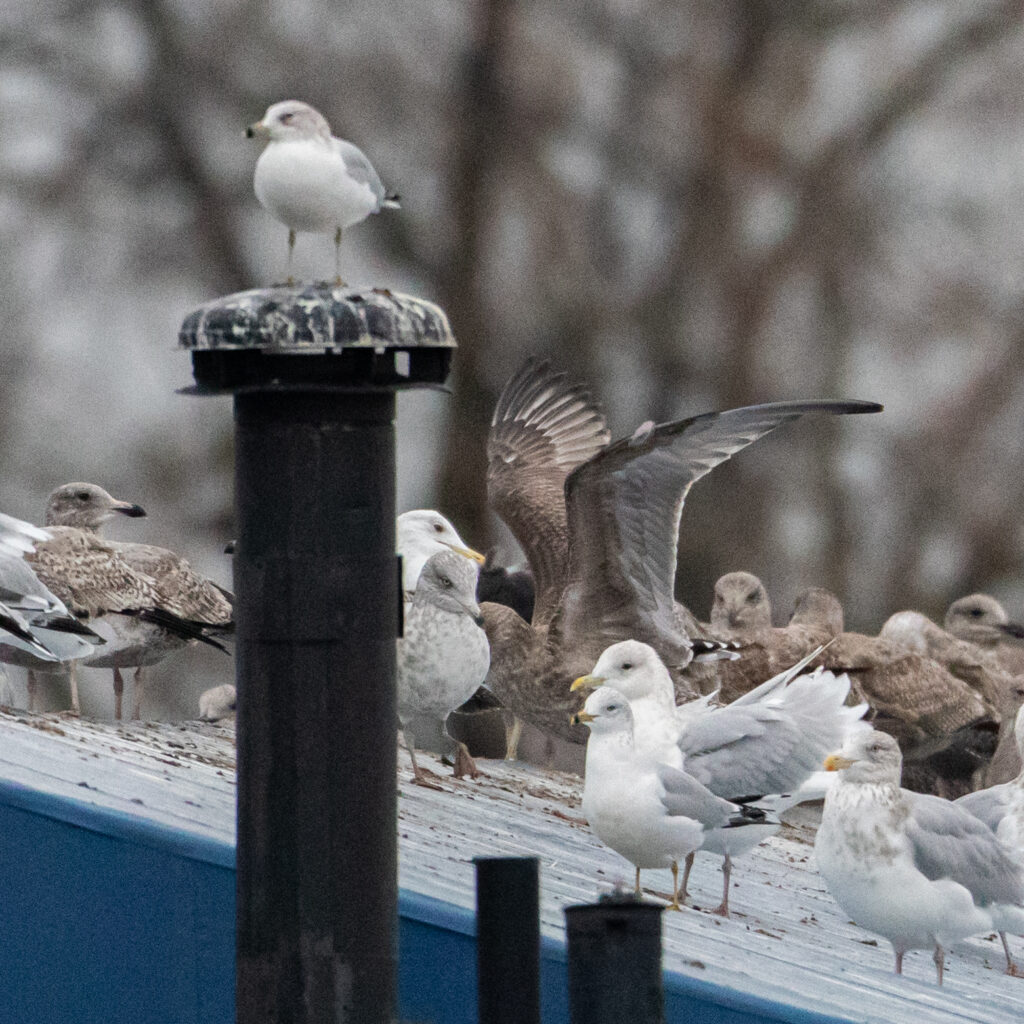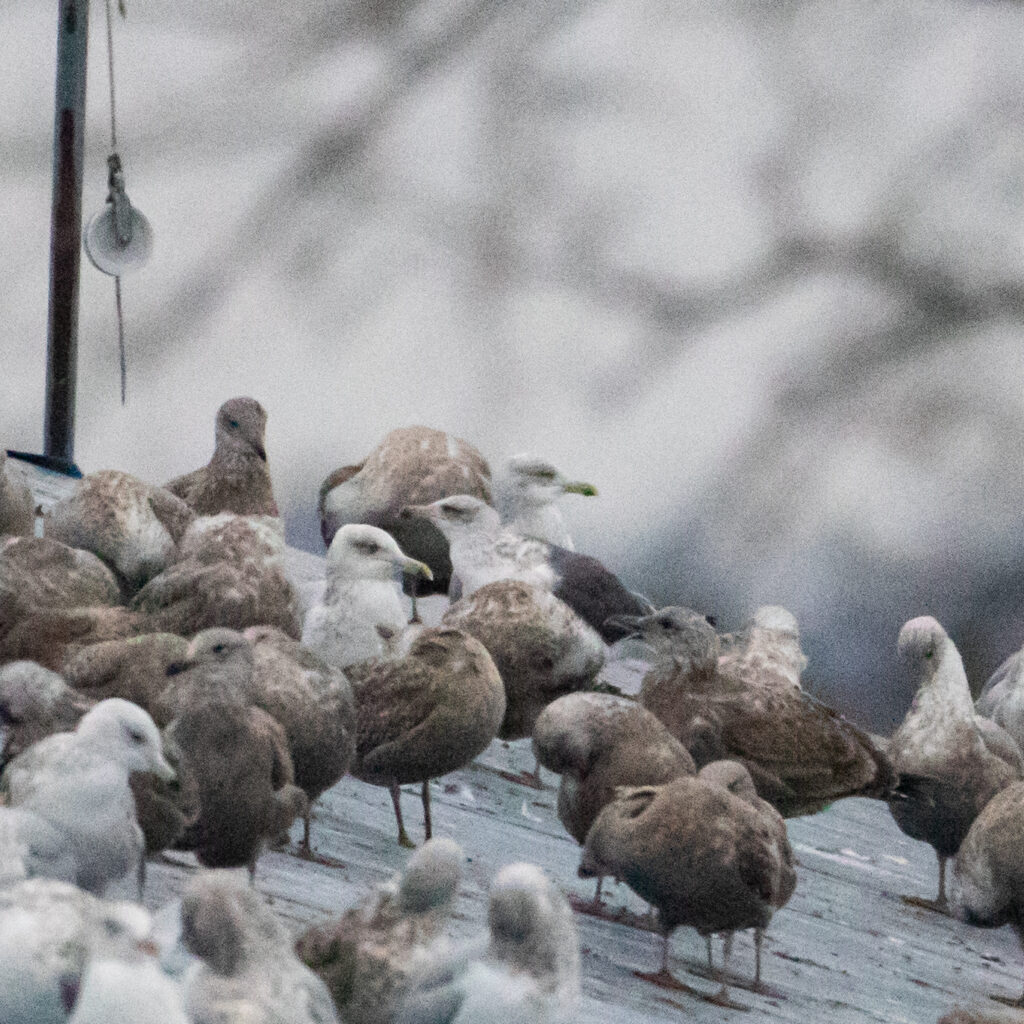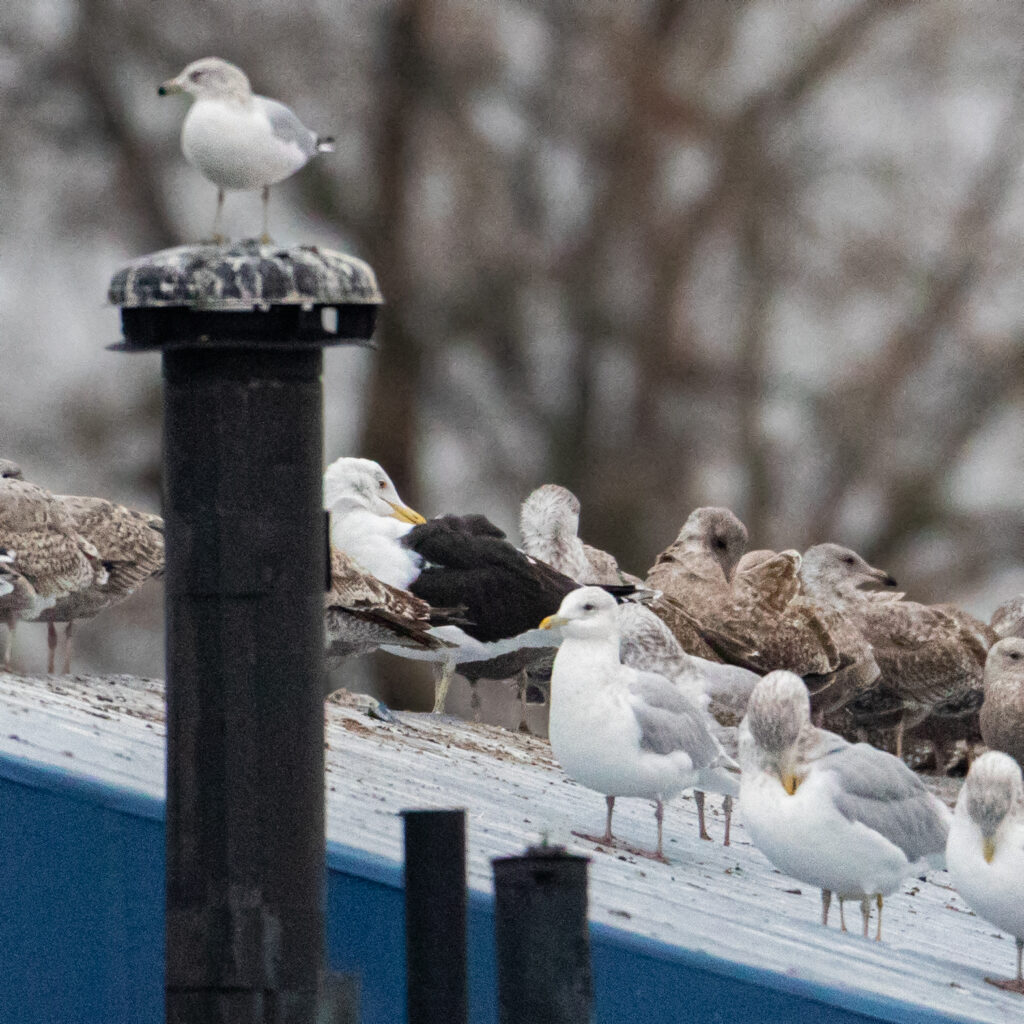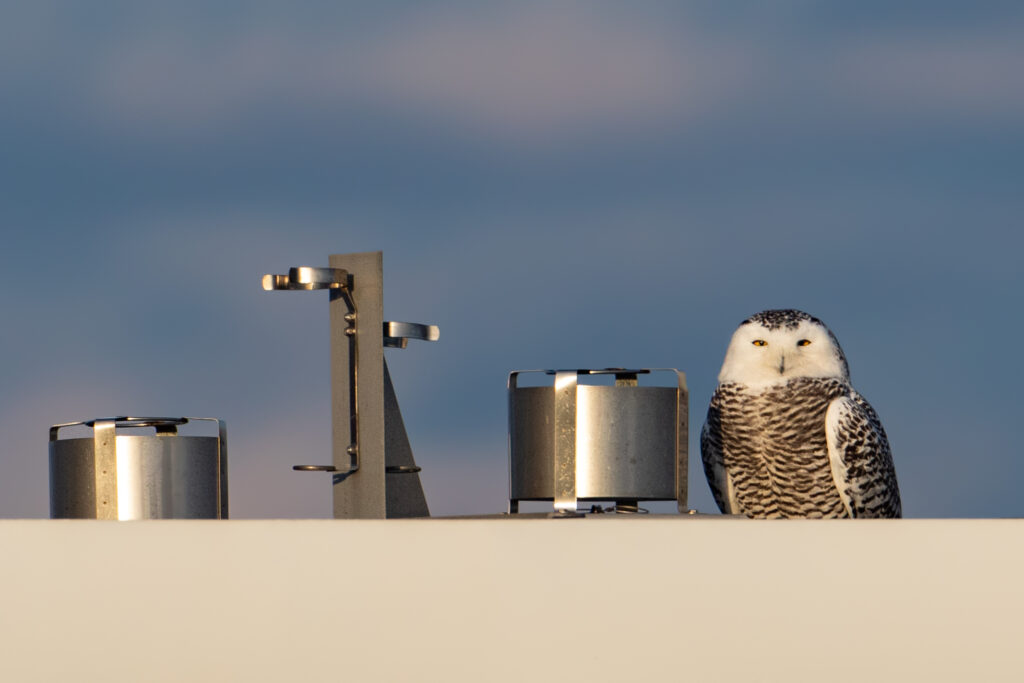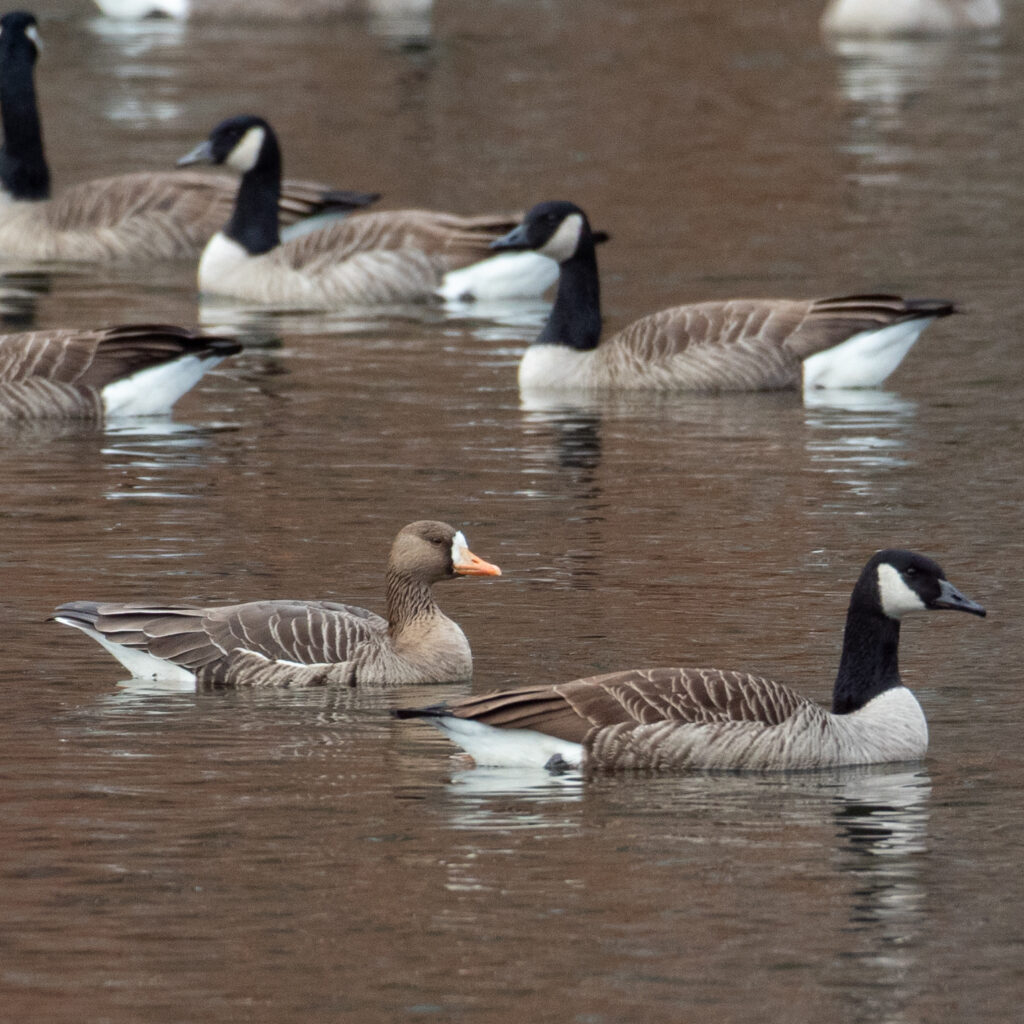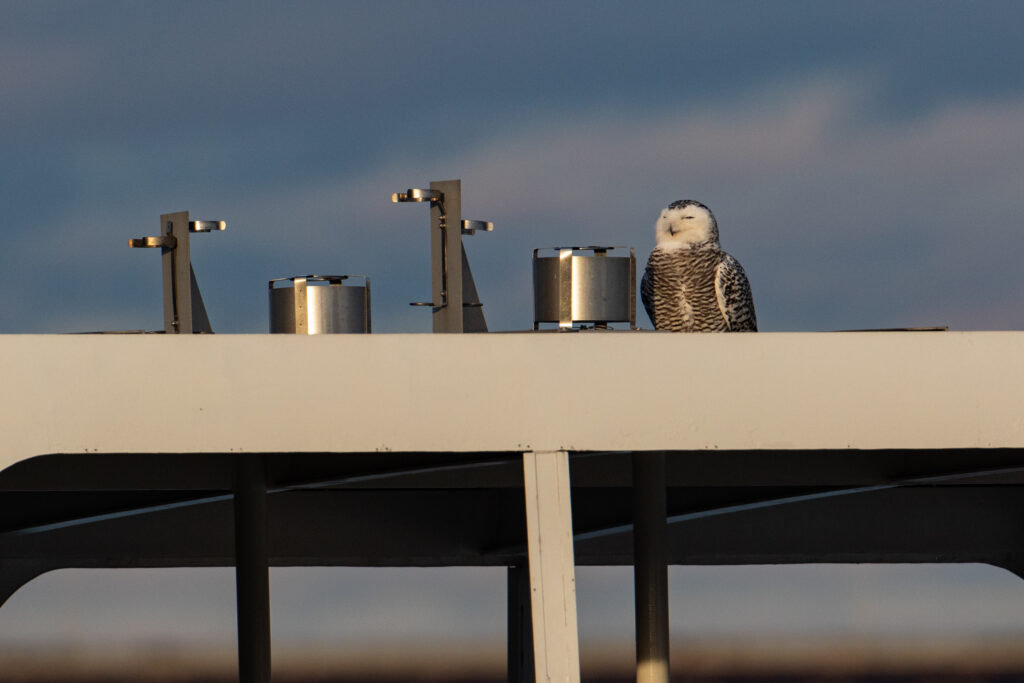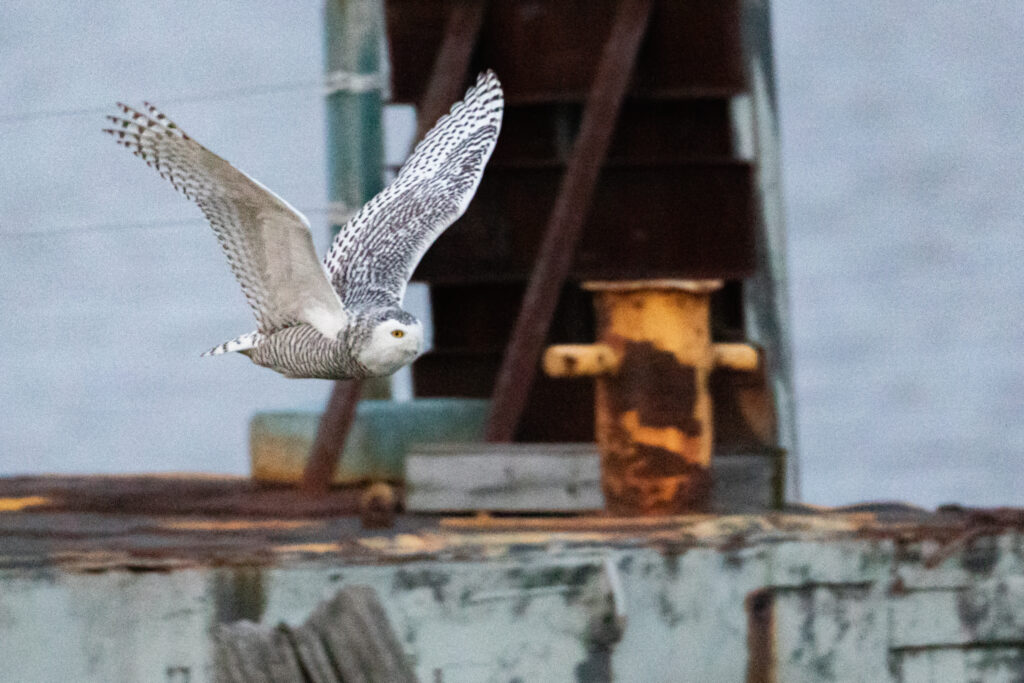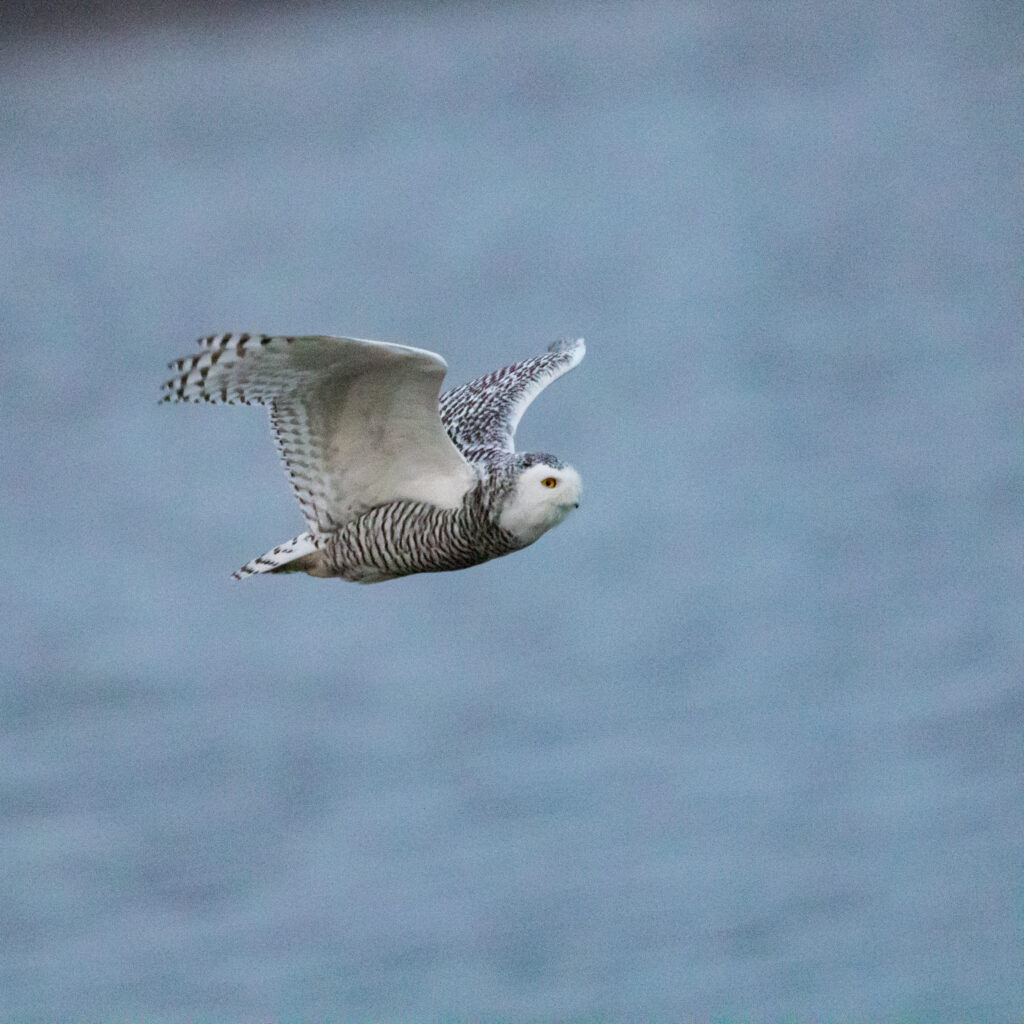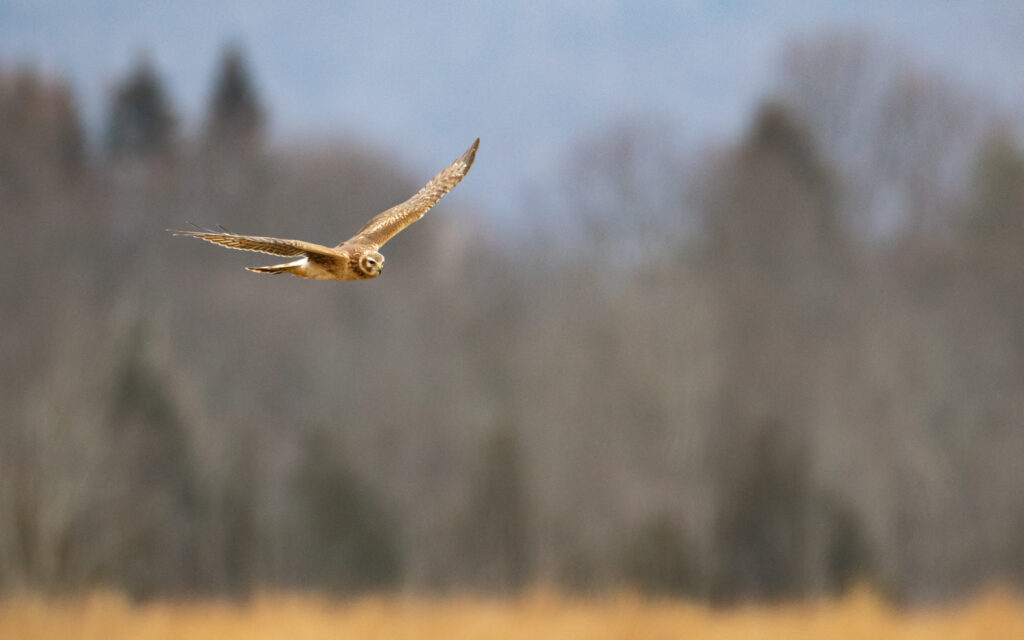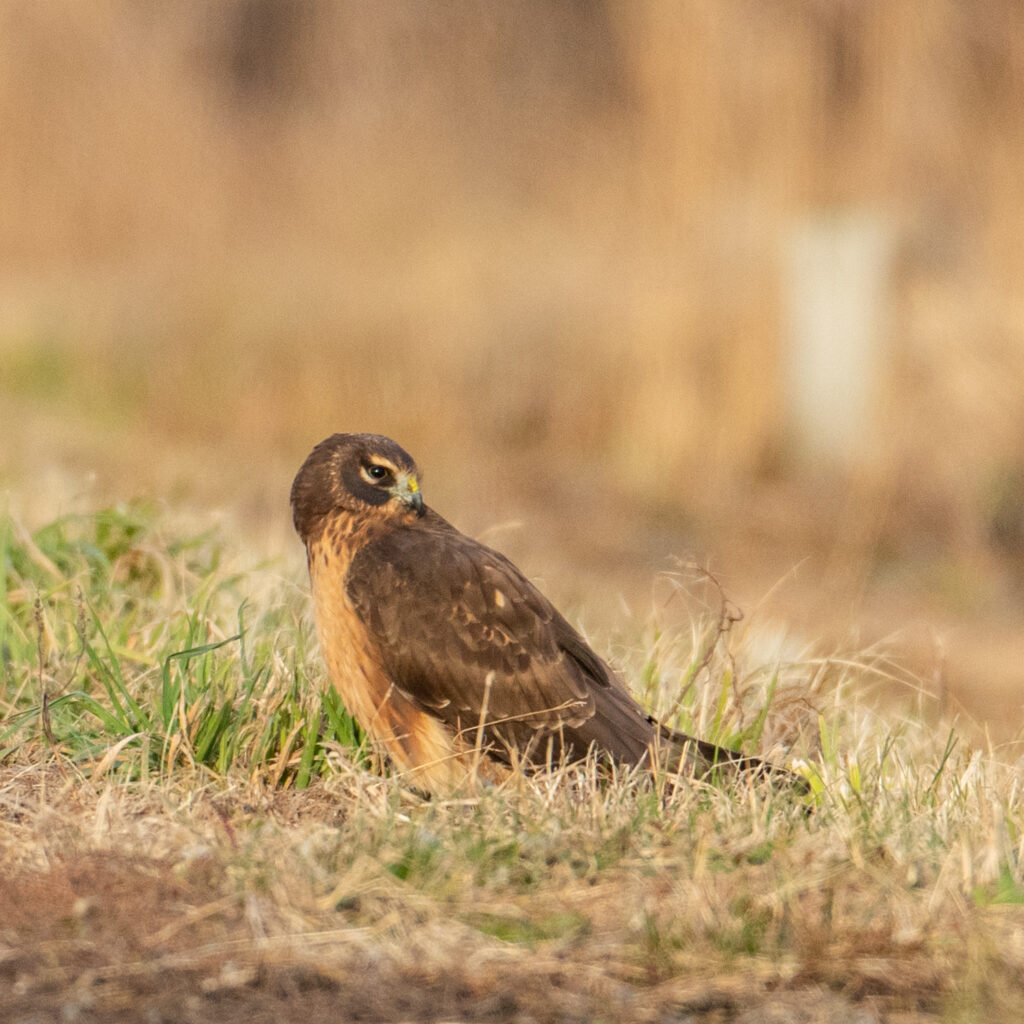It’s hard to believe that yet another year of birding is behind us. It was a good year for me, one where I changed my approach a little bit. I tried to put aside the birding expectations I’ve had in the past and simply strive for the most enjoyable overall experience at any given time. For example, there where times when a good long hike is what I needed in my life; we know these long hikes aren’t nearly as birdy as some other locations, but I enjoyed the experience and appreciated whatever birds came my way. I also focused more and more on the species of birds that I enjoy most – raptors, gulls, and shorebirds. The result was a year where my species counts were the lowest they’ve been in years, but where I enjoyed my birding time immensely.
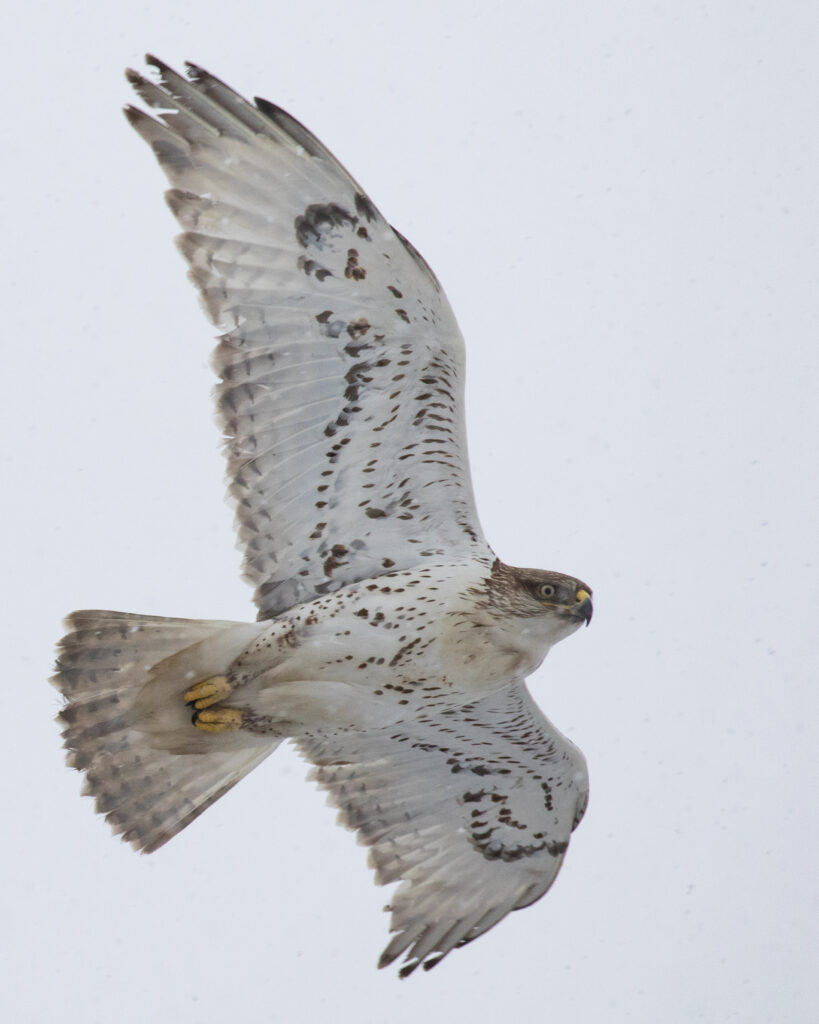
RARITIES OF 2021
We had some very notable rarities our area this year. Here’s my top five, which include the (2) life birds I saw this year:
- Ferruginous Hawk in the black dirt. Originally located by Linda Scrima on 01/16/21, this raptor was a BIG deal and pleased birders for most of the winter.
- Franklin’s Gull at the Newburgh Waterfront. Originally reported by Ronnie DiLorenzo on 12/16/21. The bird continues as of this writing, being seen mostly at the sewage treatment plant and sometimes at the boat launch.
- Sedge Wrens at Wisner Road. I don’t recall the original finder, but I went for these birds on 7/27/21 and was successful in locating at least (4) birds present. This was especially exciting for me because it was a life bird for me.
- Ash-throated Flycatcher at Rockefeller State Park Preserve. This might be considered extralimital, but this location was only about an hour away. On 12/28/21 I enjoyed relocating and getting some decent photos of this surprisingly attractive bird. This too was a life bird for me. I believe this bird continues at this location.
- Snowy Owl on the Newburgh Ferry. On 12/04/21, while gulling the Newburgh Waterfront with Bruce Nott, I located a beautiful Snowy Owl perched on top of the ferry. The bird, as suspected, was a one hit wonder and wasn’t relocated.
- Rarities Notable Mentions: John Haas found a Wilson’s Phalarope at Morningside Park on 05/31/21. Jeanne Cimorelli located a White Ibis at the Camel Farm on 10/18/21. And finally, a bird that seems to be becoming a true rarity in Orange County – I had (3) Upland Sandpipers flyover at Skinner’s Lane on 08/08/21.
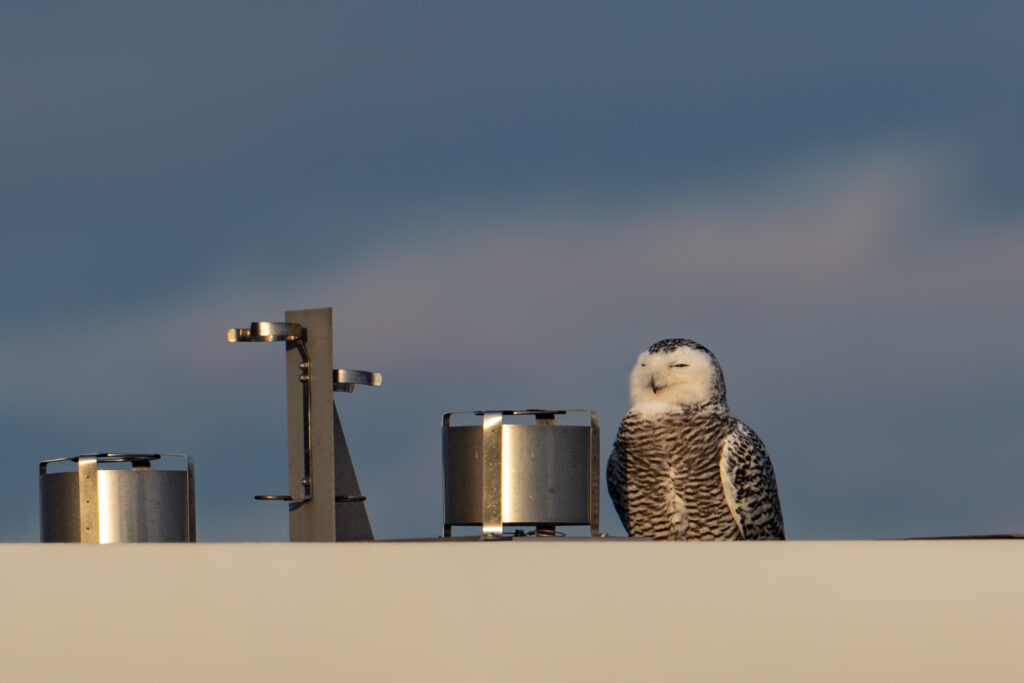
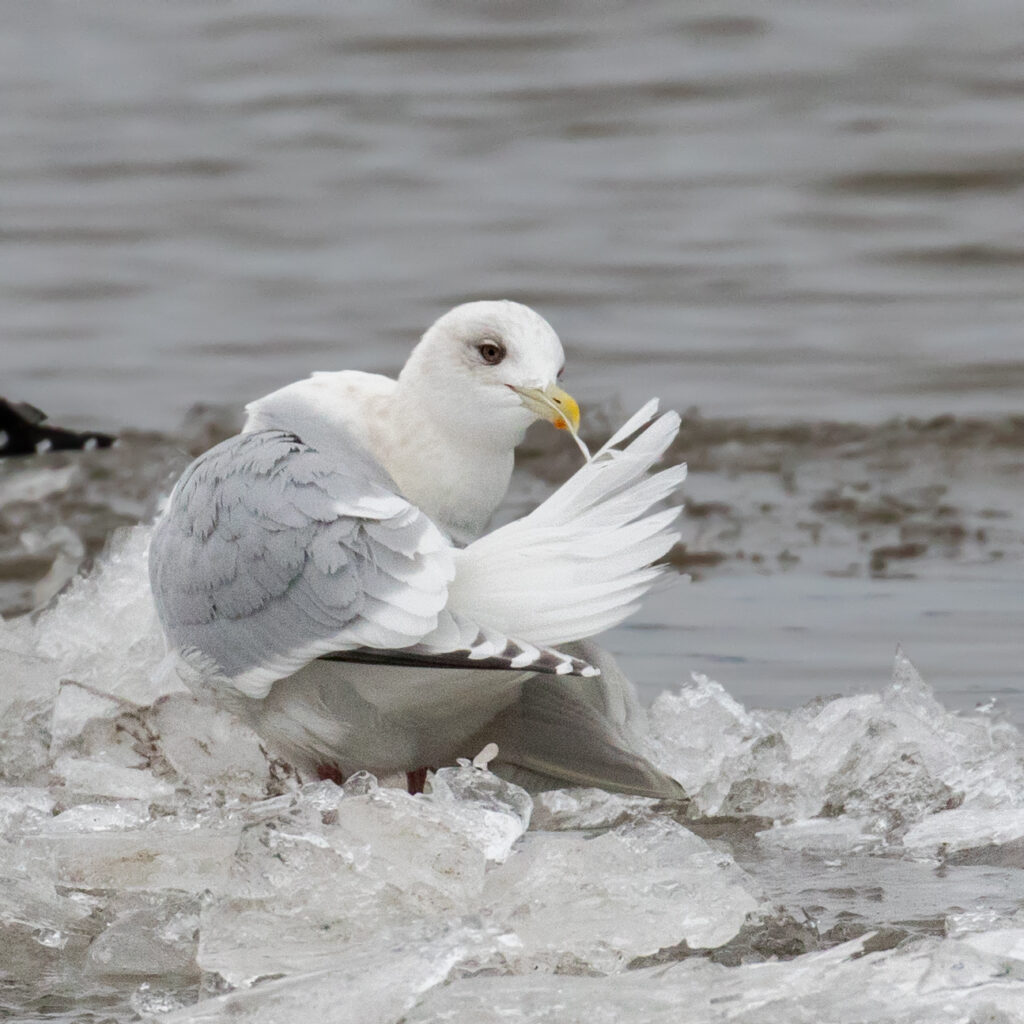
GULLS OF 2021
It was another great year of gulling in Orange County where I observed a total of (8) species of gull in the county for the second year in a row. This has increasingly become my favorite type of birding; I really enjoy spending the afternoons at the Newburgh Waterfront scanning through all the gulls. Also of note, I ran for the Lesser Black-backed Gull in Sullivan County on 11/21/21, and it was kind enough to stick around for me. It was my 193rd bird in SC.
- Ring-billed Gull
- Herring Gull
- Great Black-backed Gull
- Lesser Black-backed Gull
- Bonaparte’s Gull
- Iceland Gull
- Glaucous Gull
- FRANKLIN’S GULL
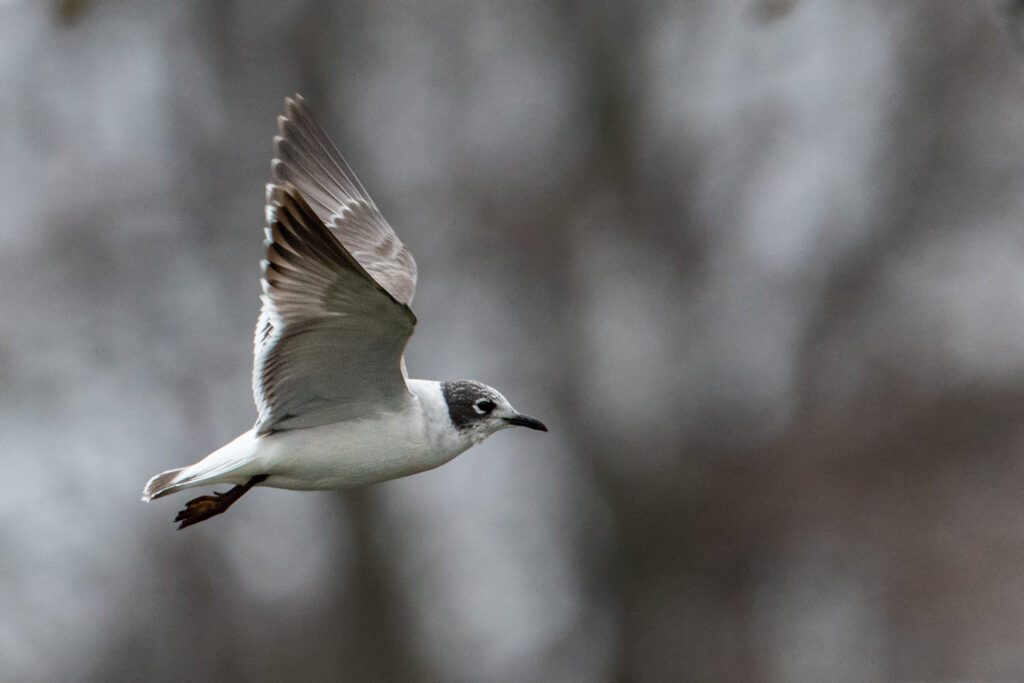
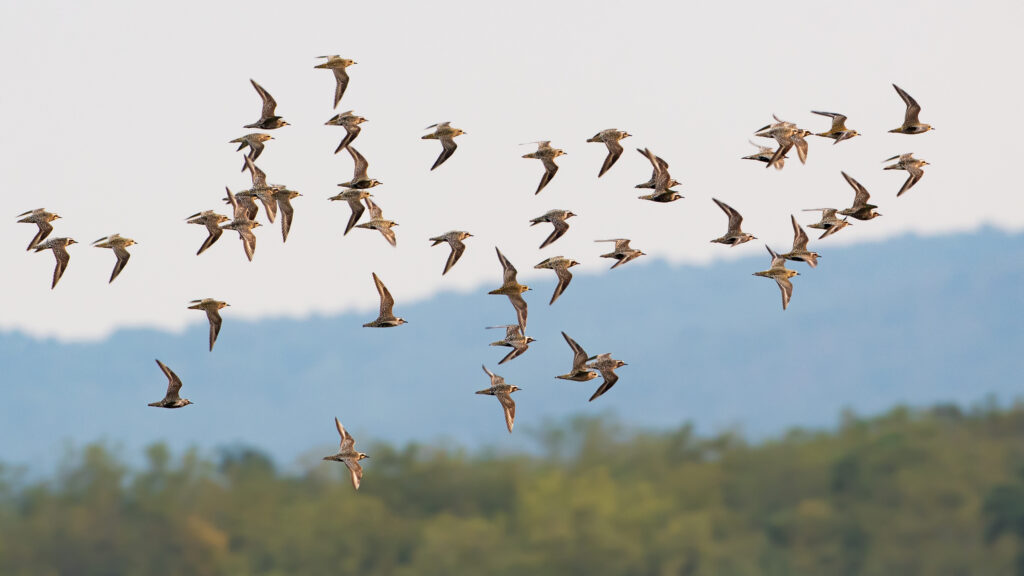
SHOREBIRDS OF 2021
I had a decent year for shorebirds, with (22) species observed. In Orange County and I totaled (18) species for the year (It very easily could have been (19), but I never went for American Woodcock). The highlight of the year for shorebirds was enjoying the large flock of American Golden-Plovers at Skinner’s Lane for a week or so in mid-September. Other highlights included the Wilson’s Phalarope in Sullivan County on 05/31/21, a flyover of (3) Upland Sandpipers on 08/08/21, and kayaking at Morningside Park to get the Long-billed Dowitcher located by John Haas on 10/17/21.
- Black-bellied Plover
- American Golden-Plover
- Semi-palmated Plover
- Killdeer
- Semipalmated Plover
- Ruddy Turnstone (Seneca County)
- Dunlin
- Purple Sandpiper (Westchester County)
- Baird’s Sandpiper
- Least Sandpiper
- White-rumped Sandpiper
- Buff-breasted Sandpiper
- Pectoral Sandpiper
- Semipalmated Sandpiper
- Short-billed Dowitcher (Seneca County)
- Long-billed Dowitcher (Sullivan and Orange Counties)
- Wilson’s Snipe
- Wilson’s Phalarope (Sullivan County)
- Spotted Sandpiper
- Solitary Sandpiper
- Greater Yellowlegs
- Lesser Yellowlegs


YARD BIRDS OF 2021
I continued to work from home of 2021, so once again, yard birding was a focal point. I decided early on to keep a list; I was really curious to see what kind of numbers of species I might be able to observe in my own yard. Part of the way through the year, Judy Cinquina and I were talking about it and decided to place a friendly wager on it. I ended the year with (72) species, and Judy finished with an impressive (68) species, in spite of getting a late start. We have already agreed to a rematch in 2022.
I was surprised by how many warblers I had in my yard – (9) species. I never considered my yard a place to get warblers until the past couple of years. And some of them were impressive, including Cape May, Black-throated Blue, Cerulean, and an unexpected Ovenbird. Other surprised include a Hermit Thrush, and my final bird of the year, a Brown Creeper. There were also three birds I would have expected to have a good chance to see, but did not: Red-tailed Hawk, Rock Pigeon, and Hairy Woodpecker.
TOP TEN PHOTOS OF 2021
Here are my personal favorite photos that I took in 2021, starting with my number one shot of the year, an American Pipit in flight. Each year choosing the top photos seems to get more difficult for me. As I go through the year’s pics, each year I am more and more underwhelmed. I think it’s because now that I’ve been doing this for a good number of years (this spring will be 10 years doing the blog!), it’s becoming more difficult to get new and exciting shots. Anyways, here’s my picks for the top ten photos of the year:

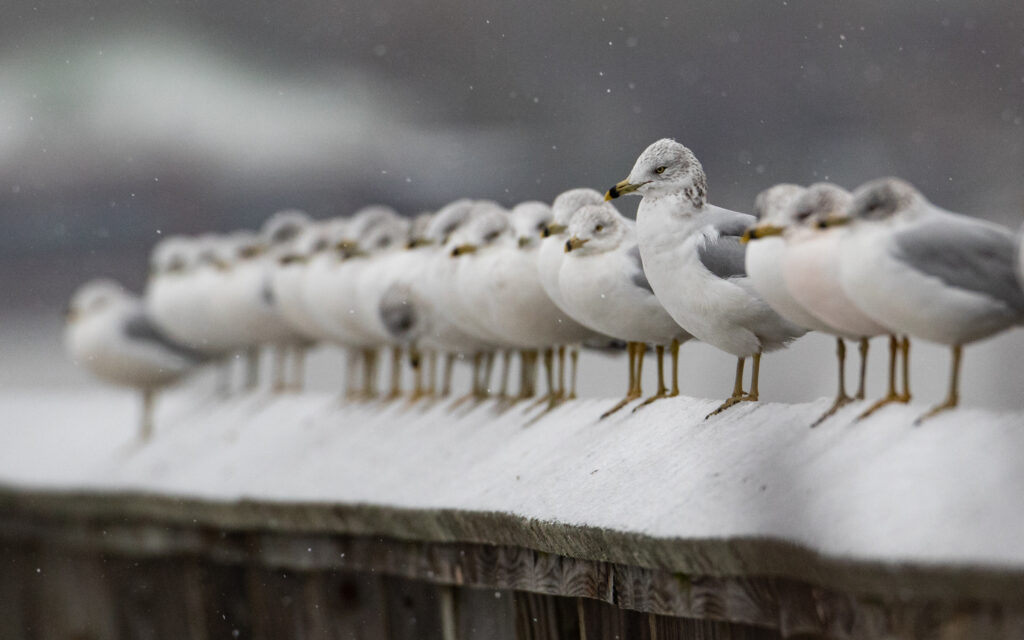
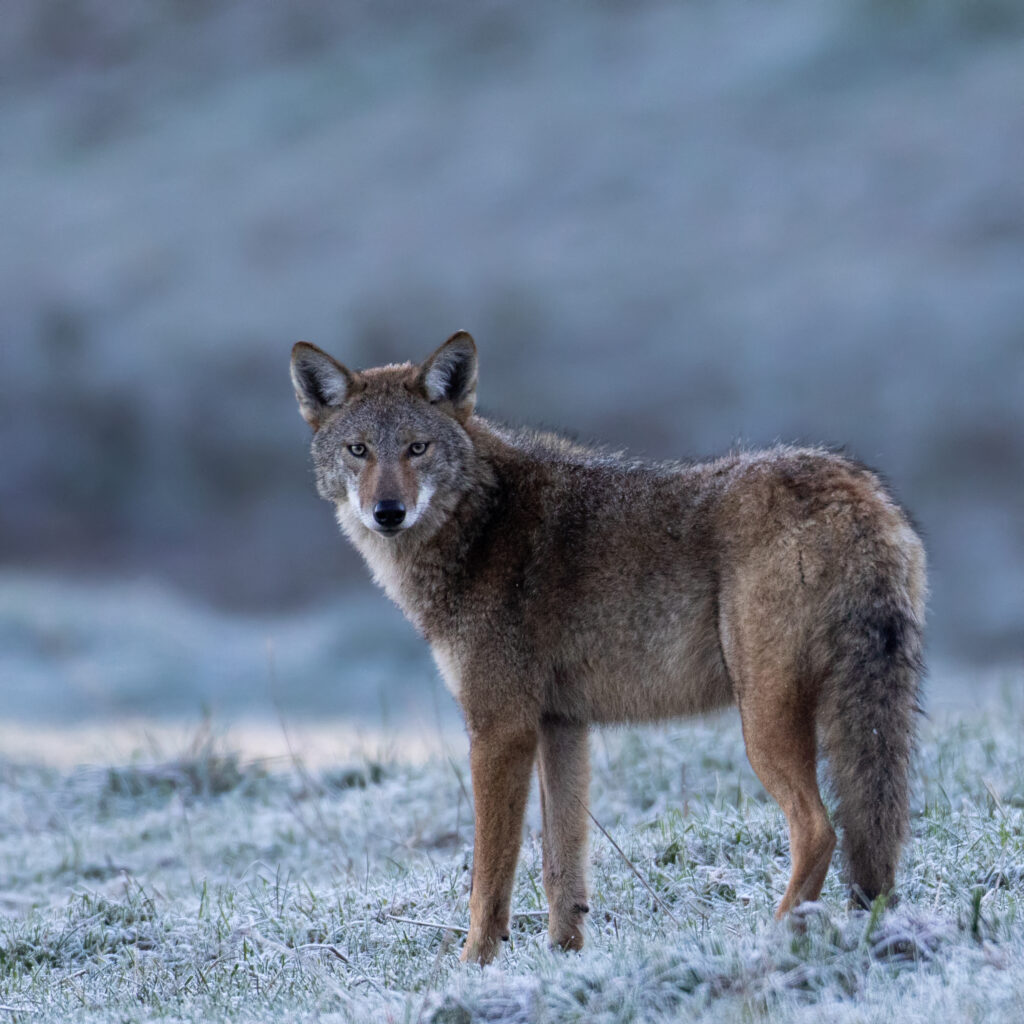
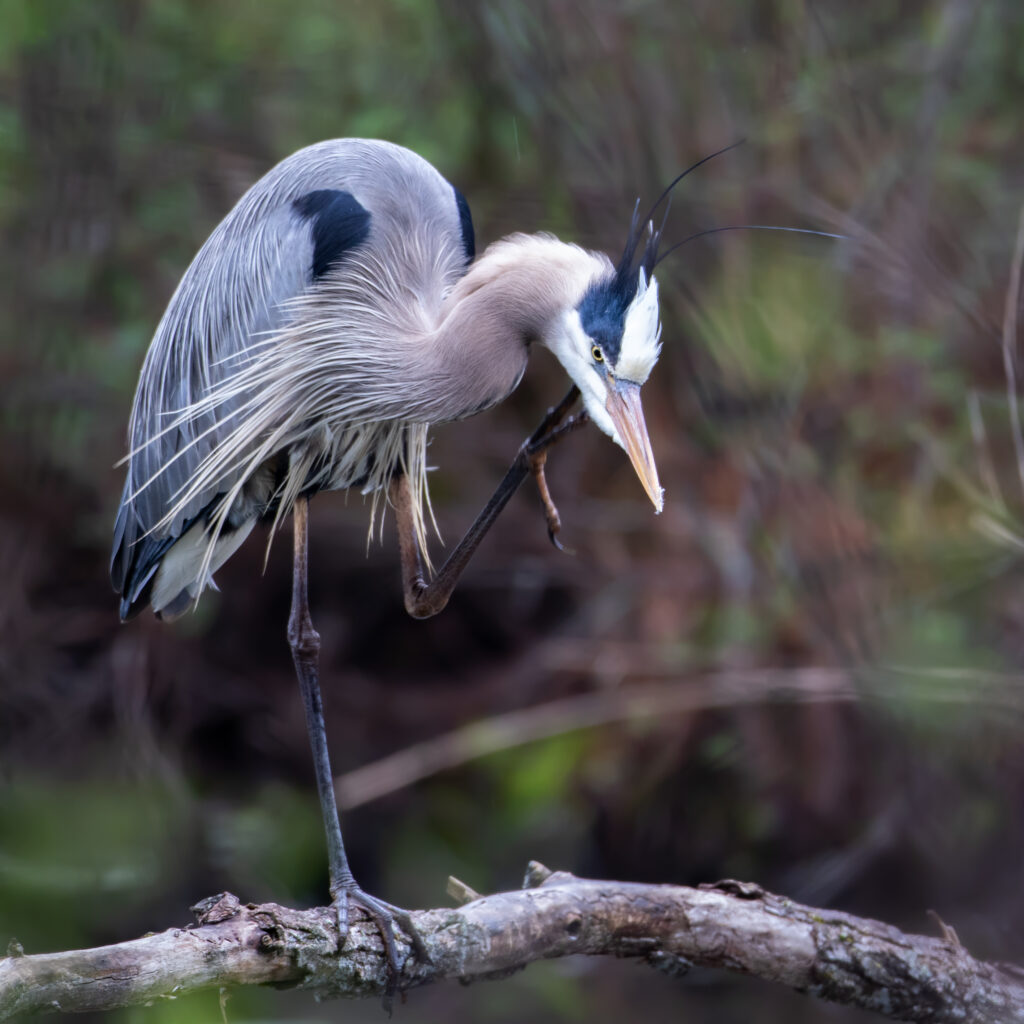
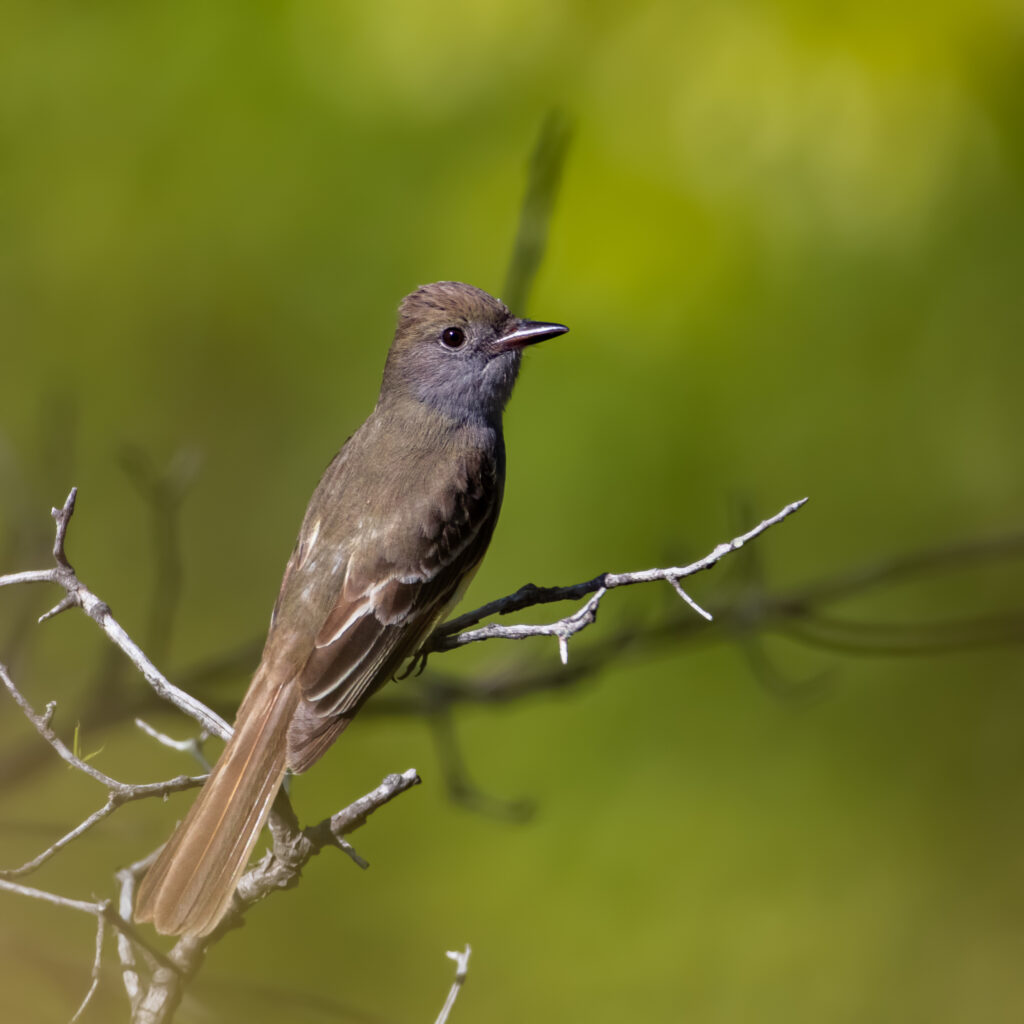
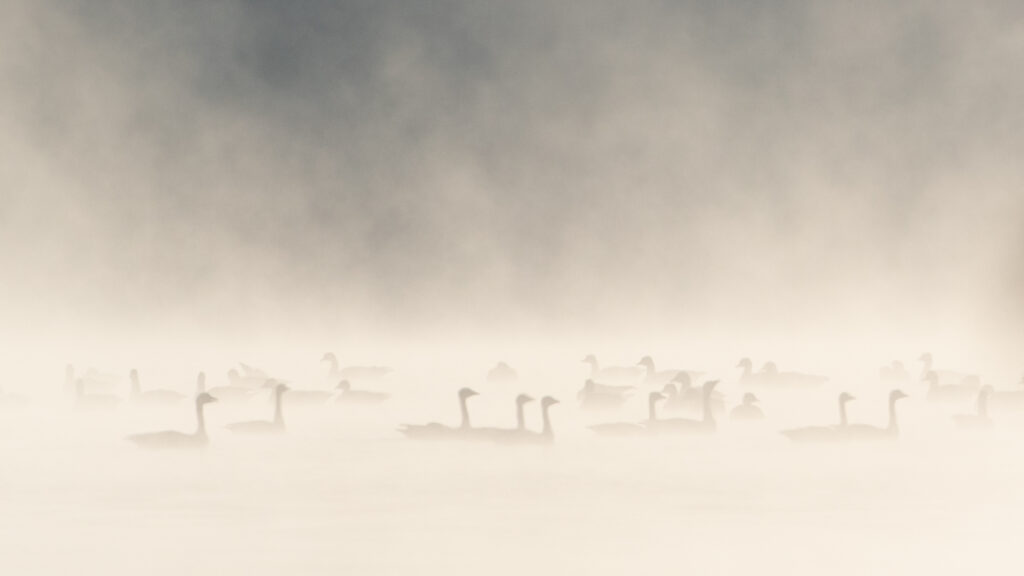
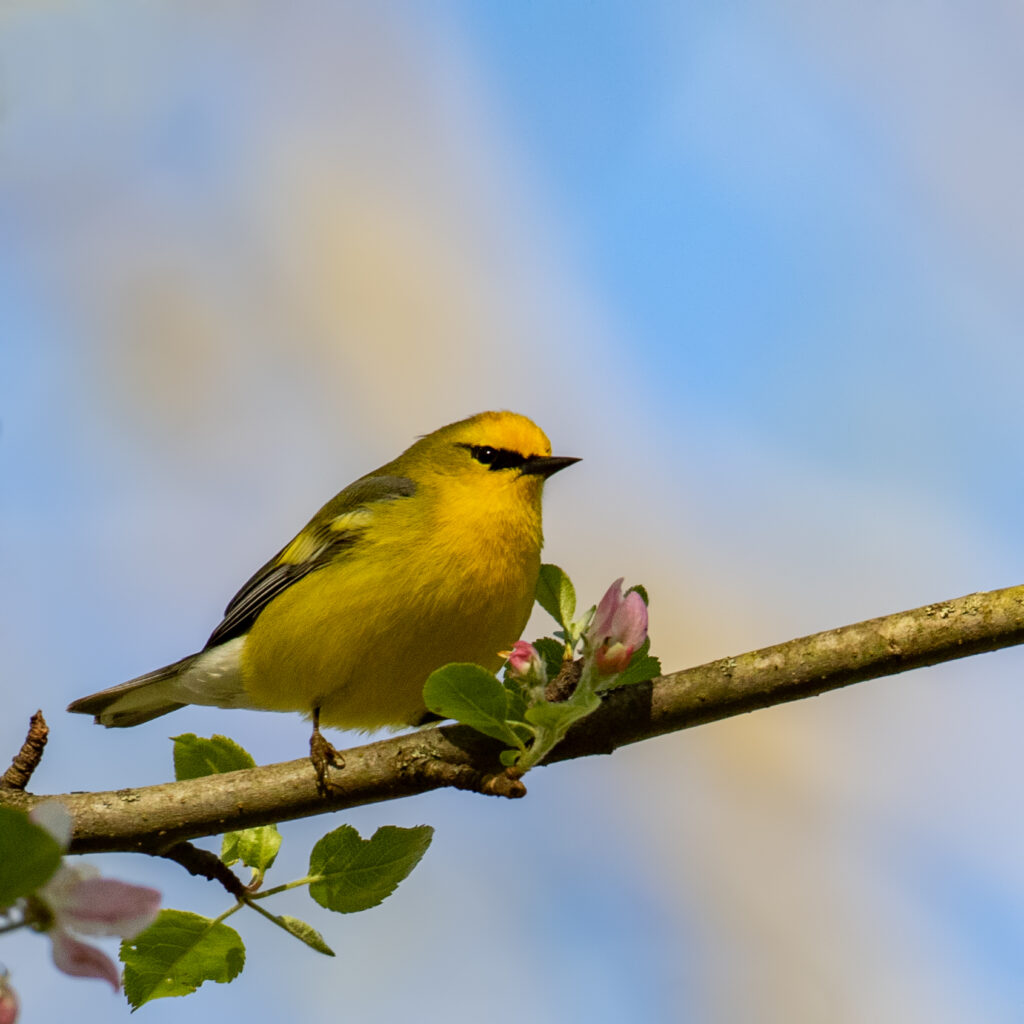
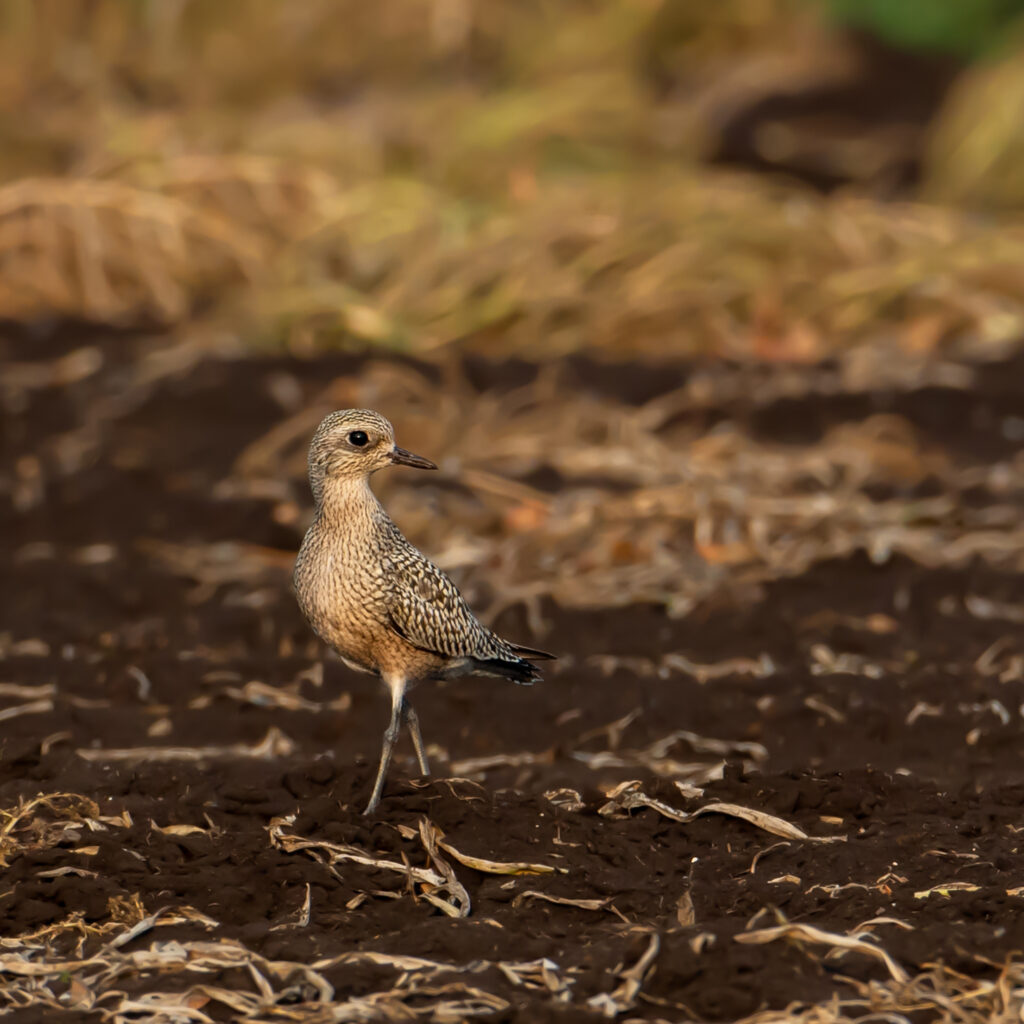
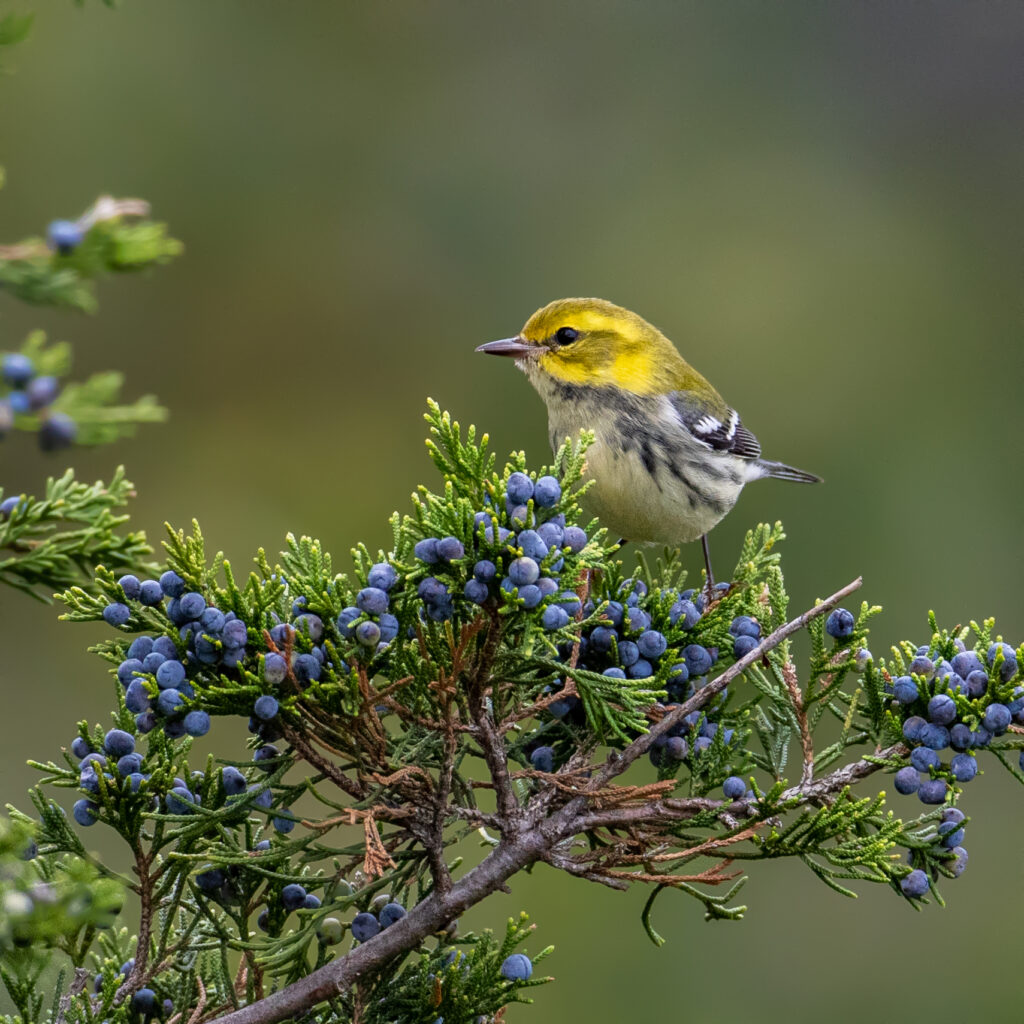
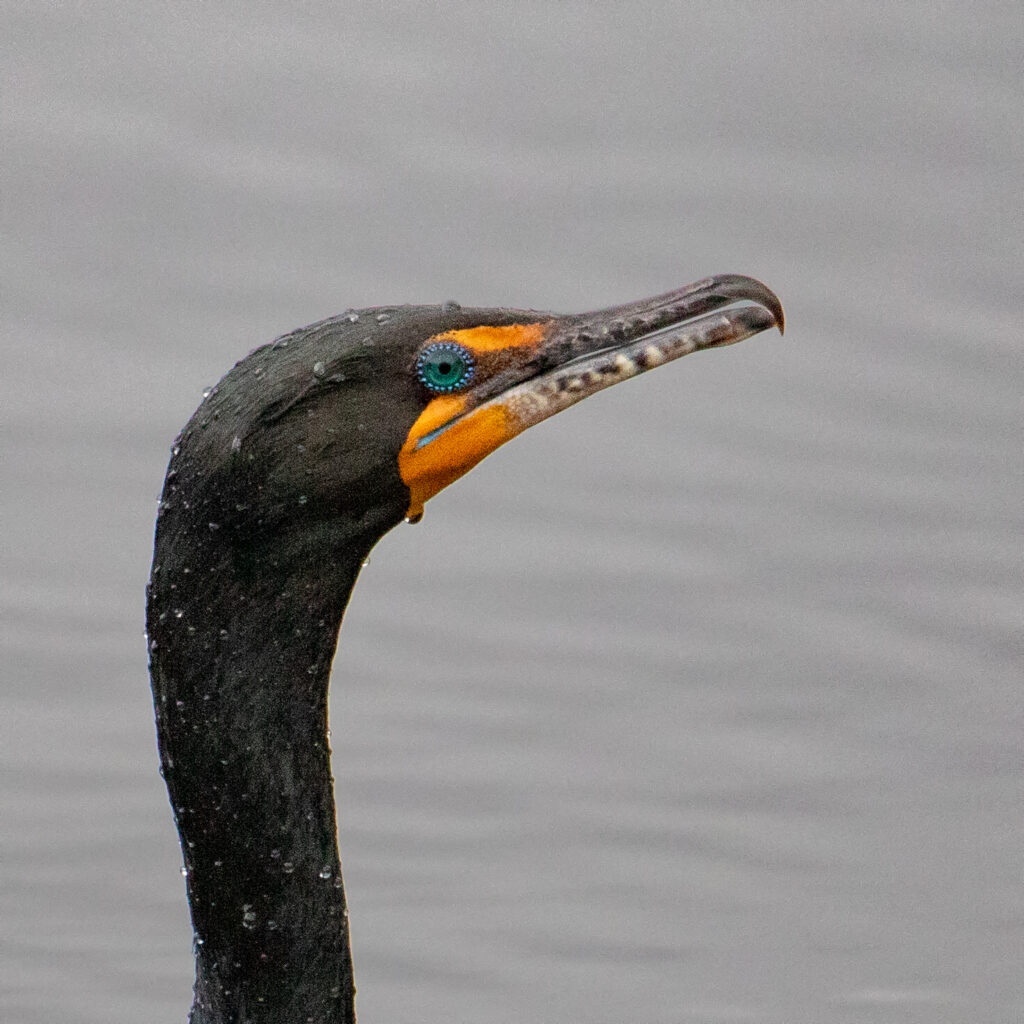
As always, I’d like to thank all my birding friends that have helped to make it such an enjoyable year of birding (you know who you are). I’d also like to thank everyone for tuning in to the blog, especially those of you who subscribe and those of you who comment – it makes my day when I get a comment on a post! Happy New Year to everyone, here’s to another great year of birding in 2022.


